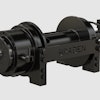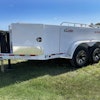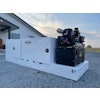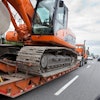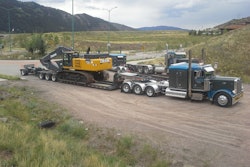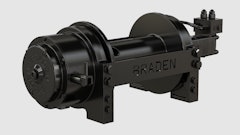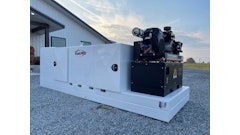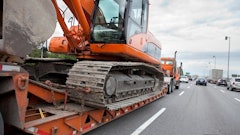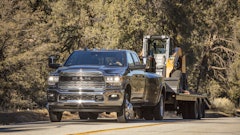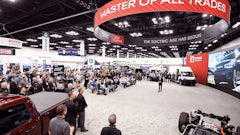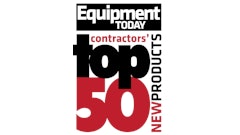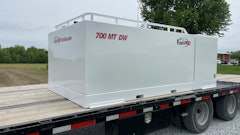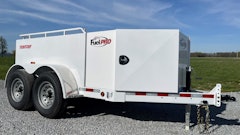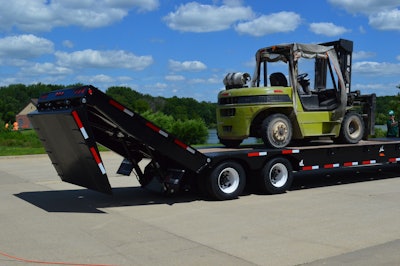
Quality lowboy and heavy-haul trailers have life spans that may reach two decades. Thus, the consequences of making a poor selection choice could be long-term frustration, or prematurely put you back in the market for another trailer.
The most important advice is to make sure the trailer is well-suited for your particular application, both now and into the near-term future. “Trailer failures in general result from using the wrong trailer for the job at hand,” says Jim Ladner, transportation sales manager, Landoll Corp. “Moving heavy equipment requires proper evaluation of the equipment being transported and then utilization of the proper trailer for safe transport.”
Understand All Critical Equipment Dimensions
Take inventory of all equipment you plan to move with the trailer. “The most crucial factor is making sure the trailer will haul the desired equipment,” says Rodney Crim, vice president of sales, XL Specialized Trailers. “This can be achieved by making sure the trailer has a high enough capacity rating to handle the largest piece of equipment it will be hauling. Customers also need to understand the regulations in their state, checking with their respective DOT office.”
Make a list of all critical measurements of the equipment to be transported. “When selecting a heavy-haul trailer the most important criteria to consider include the height, width and weight of the equipment they are hauling and the state DOT regulations for the states they will be hauling in,” says Ladner. “You must do your homework. You need to know the size and weight of each piece of equipment you will be hauling and where you are traveling.”
By carefully considering your options you may be able to maximize utilization of a trailer. “Sometimes one trailer can work for most equipment used by a contractor,” notes Crim. “Sometimes if things are more specialized or there are a wide range of sizes, it makes sense to have more than one trailer. To help with your decision making, gather the weight and dimensions for each piece of equipment. Many trailers offer special features for hauling certain types of equipment, yet those trailers often work well for other types of yellow iron, as well. For example, our Power Tail has a hydraulic folding ramp with a low incline for hauling hard to load aerial lifts and forklifts, but almost anything can be loaded on it as long as it aligns with the capacity rating.”
Be sure to seek expert advice to ensure your trailer will perform as intended. “Landoll uses software that calculates the weight distribution of the truck, trailer and loaded equipment,” says Ladner. “We can confirm if a customer’s equipment can be legally hauled before we even build the trailer. When necessary, we can custom build the trailer to haul the equipment he wants to move.”
“Many details can impact which style of lowboy a customer chooses,” states Crim. “The shape of the equipment they have should be taken into consideration. Excavators’ buckets and arms, for instance, fit nicely on the XL Low-Profile HDG trailers, which have recessed crossmembers and an open boom trough in the rear. The HDG comes in various deck heights and capacities to accommodate various sizes and geographical areas. Yet, lots of other yellow iron pieces can be loaded on the deck, making it a versatile option.”
Customization can be the best solution to meet unique demands. “Sometimes a customer has a unique situation where one of our standard units just isn’t ideal,” says Crim. “They might need a slightly different deck height or varied axle spacing, for example. To accommodate this, we have added many options to our standard units. We also rely on our highly specialized engineering department to come up with designs as needed.”
What You Can’t See Matters
While many trailers may look similar sitting in the yard, there are critical differences you may not be able to see with a visual inspection. All trailers are made from steel, but it is what you can’t see that is important.
“Steel rating is very important,” notes Crim. Higher steel ratings resist fatigue and hold up longer. “We use 100K web and 80K flange, which is generally considered the highest ratings for lowboys.”
The steel used to make a trailer helps determine its performance characteristics. For instance, 100,000-psi yield steel is more flexible than 80,000-psi yield steel and therefore will be more subject to fatigue and cracking. “That means if you use 100,000-psi for the entire trailer, it could flex too much and be subject to shorter life cycles,” Ladner explains. “You could end up with damage due to the vibration and wear from rough road conditions. Landoll uses a combination of 80,000- and 100,000-psi flange to get a mix of maximum durability and some flexibility. You must have both durability and flexibility to build trailers with tare weights that are acceptable and the frame is able to haul the rated weights.”
Factor in Weather Resistance
Heavy equipment trailers are long-term investments that can last 20+ years, which means weather resistance is a primary factor in many applications. Rust is a major factor in the Northeastern U.S. and Canada, reports Landoll. There are various coatings and treatments that can help resist corrosion in these environments.
Landoll’s paint process includes taking the welded frame, putting it through a finish pre-bake and steel shot blasting it to a bright metal. A zinc-rich primer is next applied and cured in an oven. Finally, the powder coat is applied and cured to the primer. “[This process] provides excellent protection,” says Ladner. “However, for ultimate rust protection, you cannot beat galvanization. Landoll offers to galvanize the entire frame of any of its trailers. Our first galvanized unit was in 2004 and the crossmembers under the trailer looked as good as new in 2014 when we last saw it.”
Decking material should also be carefully considered. Both XL Specialized Trailers and Landoll use Apitong decking as the standard material. “It is much stronger than oak, and we have found that it holds up to the rigors our customers need it to,” says Crim.
Ease of loading is a major consideration with any heavy-haul trailer. “For the traveling axle trailers, a major factor is the load angle,” says Ladner. “Generally, the less the angle, the safer it is to load the equipment. Regarding a detachable trailer, it’s obviously safer to detach the trailer and load from the front than it is to load equipment over the back of the trailer using ramps.”
Ease of Use a Priority
The objective with any trailer is to quickly and safely transport equipment to the jobsite with minimum fuss. “Lowboys with detachable necks allow for loading on the front ramps,” says Crim. “Getting the neck detached and reattached quickly and safely is important. Most contractors choose a hydraulic neck instead of a mechanical neck because the process is faster. Our necks are attached with an air-lock pin in the base, as well as pins in the front for added safety.”
Often, it’s the small differences that can set one trailer apart from another. For instance, Landoll developed a customized steel traction plate. “We could not find a traction plate on the open market that was designed for the concentrated loads we see with rental and construction equipment,” says Ladner. “Landoll’s traction plate makes it safer to load equipment during different weather conditions like rain and snow.”

